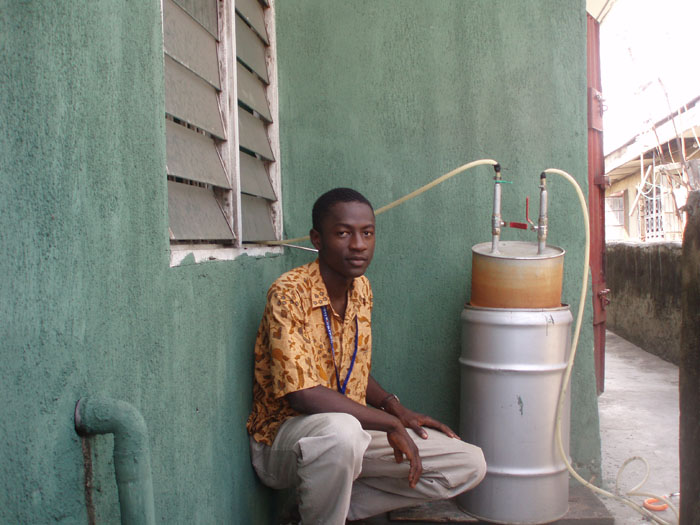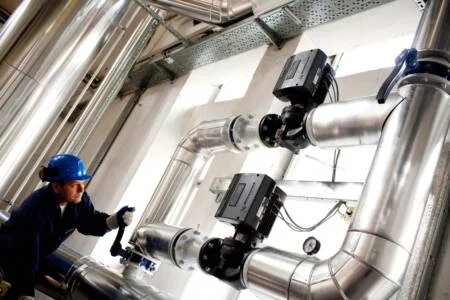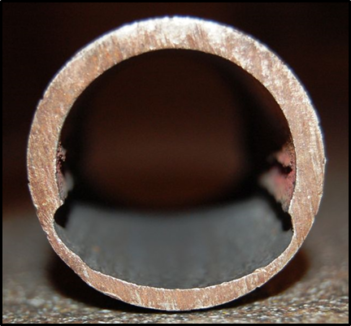Dr. Henry Boyo, Senior Lecturer and Head Hardware Development Laboratory, Department of Physics, University of Lagos, recently automated the production of bio-gas for efficient energy use and environmental friendliness
Since the creation of man, the thirst for energy have never been quite quenched. Different sources of energy has been produced like Nuclear, Thermal, Wind, Geothermal, Hydro, which help man to do different types of work. Most of these energies like the fossil fuel such as kerosene used for cooking, has offensive odour during cooking and also blackens the material on which it beats.
“Biogas typically refers to a gas produced by the biological breakdown of organic matter in the absence of oxygen. Biogas originates from biogenic materials and is a type of bio fuel. One type of biogas is produced by anaerobic digestion or fermentation of biodegradable materials such as biomass, manure or sewage, municipal waste and energy crops. This type of biogas is comprised primarily of methane and carbon dioxide.
If the proposed conversion of sewage to biogas plant is installed across every rural home in Nigeria and also in urban homes, there will be a reduction in carbon dioxide pollution to the environment due to incomplete combustion. From environmental point of view, the application of biogas as an energy source can not only alleviate the energy crises caused by the depletion of fossil fuels, but also contribute to the green house effect prevention, as there is a zero newly formed carbon(iv)oxide production.
When organic materials decay, it yields useful by – products. The kind of by – product depends on the conditions under which decay takes place. Decay can be aerobic (with oxygen) or anaerobic (without oxygen). Any kind of organic matter can be broken down; either way but the end products will be quite different.”
On the mechanism of the Bio-gas, the Japanese trained physicist said:
At the point, large bubbles force their way to the surface where the gas accumulates. This gas is very similar to natural gas and can be burned directly for heat and light, stored for future use or compressed to power heat engines. The resultant gas which is produced by anaerobic digestion known as marsh gas, sewage gas, dun gas or biogas is about 70% methane (CH4) and 29% carbon dioxide (CO2) with insignificant traces of oxygen and sulfurated hydrogen (H2S) which gives the gas a distinct odour. (Although it smells like rotten eggs, this odour has the advantage of being able to trace leaks easily).
The basic gas producing reaction in the digester is: carbon plus water = methane plus carbon dioxide (2C + 2H2O CH4 + CO2). The methane has a specific gravity of 0.55 in relation to air. In other words, it is about half the weight of air and so rises when released to the atmosphere. Carbon dioxide is more than twice the weight of air, so the resultant combination of gases, or simply bio – gas, when released to atmosphere, will rise slowly and dissipate. The composition and fuel value of biogas from different kind of waste depend on the following: temperature at which digestion takes place, the nature of raw material, the pH of the sewage. Boyo said.
He further highlighted on the process of the production: “The process begins with separation of household waste into biodegradable and non – biodegradable waste. The biodegradable material is shredded, slurred and then screened and pasteurised to start the process of killing harmful pathogens. It is then pumped into the digester where bacteria break down the material and form biogas, leaving a digestate.
There are 3 main process stages in anaerobic digestion which involves a number of bacteria including acetic acid forming bacteria (acetogens) and methane forming bacteria (methanogens). These bacteria feed upon initial feedstock, which undergoes a number of different processes, converting it to intermediated molecules including sugars, Hydrogen and Acetic acid before finally being converted to biogas.
As with aerobic systems, the bacteria in Anaerobic systems used in the growing and reproducing micro organisms within them require a source of elemental oxygen to survive. In an anaerobic system, there is an absence of gaseous oxygen.
When the oxygen source in an anaerobic system is derived from the organic material itself, then the intermediate’ end products are primarily alcohols, aldehydes and organic acids plus carbon dioxide. In the presence of specialized methanogens, the intermediates are converted to the ‘final’ end products of methane, carbondioxide with trace levels of hydrogen sulphide. In an anaerobic digester the majority of the chemical energy contained within the starting material is released by methanogenic bacteria as methane.
The Carbon-Nitrogen Ratio of the organic waste material being fed into the tank determines the amount of gas that will be produced. The relationship between the amount of carbon and Nitrogen present in organic materials is expressed in terms of the Carbon/ Nitrogen (C/N) ratio. A C/N ratio ranging from 20-30 is considered optimum for anaerobic digestion.
If the C/N ratio is very high, the Nitrogen will be consumed rapidly by the methanogens for meeting their protein requirement and will no longer react on the left over Carbon content of the material. As a result, gas production will be low. On the other hand, if the C/N ratio is very low, Nitrogen will be liberated and accumulated in the form of Ammonia (NH4). Ammonia will increase the pH value of the content in the digester. A pH higher than 8.5, will start showing toxic effect on methanogen population.
Animal wastes particularly cattle dung, has an average C/N ratio of about 24. The plant materials such as rice straw and sawdust contain a higher percentage of Carbon. The human excreta have a C/N ratio as low as 8. C/N Ratio of some of the commonly used materials is presented below.
Materials with high C/N ratio could be mixed with those of low C/N ratio to bring the average ratio of the composite input to a desirable level. In China, as a means to balance C/N ratio, it is customary to load rice straw at the bottom of the digester upon which latrine waste is discharged, similarly, at Machan Wildlife Resort located in Chitawan district of Nepal, feeding the digester with elephant dung in conjunction with human waste enabled to balance C/N ratio for smooth production of biogas.
Share your industry press now!
Are you a PR agency or sustainability-focused organization? Join the World of Renewables network FREE today and gain exclusive access to our platform to promote your business, share the latest industry news, and connect with a global audience of 700,000+ renewable energy professionals.
Register Now to start posting your updates and showcase your expertise to a highly engaged, environmentally-conscious community.
Find out more about our Content Partnership Programs.*2024 AWARD WINNER* Websites & Mobile Sites, Webby Winner, Peoples Voice 2024




















